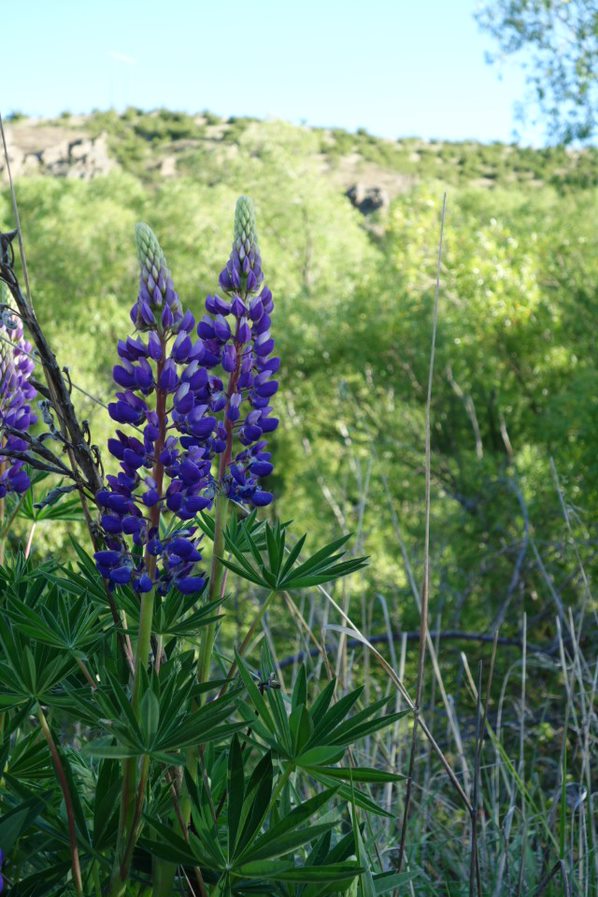
The teachers noticed that their students had not performed well on the question Lupins. This question required students to write a detailed description of a lupin based on close observation of a photograph. The teachers realised that the responses their students gave were often emotive, or “flowery”, and not specific to the lupin plant.
It's purple and pretty
they smell nice
Beautiful purple flowers reaching up to the sun
They decided that writing scientific descriptions and explanations would be the focus of their writing programme. Three of the teachers took a slightly different approaches to developing this skill with their students.
Teacher one developed criteria by looking for differences
Teacher one used a photo of a vase containing several different flowers to start supporting his students to write accurate, scientific descriptions. Students were asked to describe one flower in the vase so that the rest of the class could identify it. When introducing the activity, the teacher emphasised the difference between writing to describe and writing to entertain. He encouraged the students to think about the colour, shape, and size of the flower they were describing. Following on from this activity, the teacher then showed his class a series of photos of red flowers (a poppy, a tulip, a rose, and a dahlia). The photos were shown one by one, and students were tasked with writing a description of each flower. This was a challenge for students as there were many similarities between the flowers. Students were reminded to describe the colour, shape, and size of each flower. Some continued to use language such as ‘beautiful’, ‘weird’, or ‘like fireworks’, but most students were beginning to become more specific with their descriptions. As the class began sharing their writing and discussing the parts of the flowers, the teacher realised they needed some scientific vocabulary. He showed a diagram of a flower and introduced some common terms for parts of flowers such as petals, stem, and stamen. This supported the students to start using this more specific language in their writing.
Teacher two developed criteria using the marking rubric
A second teacher used the marking rubric for the Lupins item with his students. He gave his class some examples of what students had written and asked them to evaluate these descriptions against the rubric. As a class the students looked at a photo of a hyacinth and wrote labels for different parts of the flower which formed the basis of a class description. Students were then given a different flower to label and describe. They shared their description with a partner who evaluated it against the rubric.
Teacher three developed criteria using a range of familiar contexts
Teacher three began by using contexts that were familiar to the students and would engage them. He started by getting students to look at photos of four swimming pools, choose one and write a description that would enable their classmates to recognise it. From there, the teacher then used photographs of hamburgers and asked students to classify these and justify their reasoning. He found that he had to spend some time with the students unpacking the meaning of the words ‘classify’ (group) and ‘justify’ (explain why). Students then selected a criterion for classifying the burgers and explained their groupings.
The teacher then used the Assessment Resource Bank (ARB) item Classifying leaves and asked students to repeat the activity, this time classifying the leaves and justifying their decisions.

Classifying leaves is a Level 3 item in which students look for similarities and differences in leaf patterns to answer questions about observations and evidence.
Several teachers at Rangikura School used ARB items to support their students to develop skills in writing accurate descriptions.
Moths and butterflies is a Level 1/2 item in which students use information about differences between moths and butterflies to decide which category examples belong to, and identify the evidence used to make the decision.


